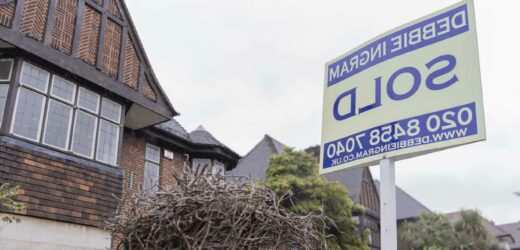A STAMP duty cut will now end in 2025, the government has announced.
Chancellor Jeremy Hunt revealed the change to the housing tax in his Autumn Statement today.
The holiday was first introduced in the government's mini-budget on September 23 with no set deadline.
However, it will now finish on March 31, 2025.
Today, the Chancellor also announced:
- Up to £1,350 in cost of living payments
- Pension triple lock to stay in £870 boost for seniors
- Benefits including Universal Credit and pension credit to rise with inflation
- New work coach requirements for Universal Credit
- Social housing rents to rise 7%
- Freeze on income tax and National Insurance thresholds
- Stamp duty cut to end in 2025
- Typical energy bills to be capped at £3,000
- Minimum wage to rise to £10.42 an hour
Most read in Money
Millions on benefits and Universal Credit will get new one-off £900 payment
Brits face highest tax burden since WW2 – but vulnerable will get £1,350
Stamp duty land tax (SDLT) is a lump sum payment you have to make when purchasing property over a certain threshold.
It applies in England and Northern Ireland, with separate property tax schemes running in Scotland and Wales.
So the cut means people buying houses over a certain amount won't have to pay tax on it.
Specifically, you don't have to pay any stamp duty on a property valued up to £250,000.
Plus, first-time buyers, who already pay no stamp duty on the first £300,000 of the price of a property, have seen the threshold raised to £425,000.
Exactly how much stamp duty you pay will also depend on the value of the property you're buying, as well as whether it is your first or second home.
Here we show you how to calculate your potential savings.
How much could I save on stamp duty?
How much you will save from the cut to stamp duty depends on how much the house costs – but it could be thousands of pounds.
Here's how much first-time buyers will save:
- £100,000 – no saving
- £200,000 – no saving
- £300,000 – no saving
- £400,000 – £5,000
- £500,000 – £6,250
First time buyers already paid no stamp duty on the first £300,000 of the price of a property.
This means looking at a property at this price or below will see no change.
But those looking to buy a property at £400,000 will now pay no stamp duty and will save £5,000.
First time buyers looking to purchase a home at £500,000 will now save £6,250.
Here's how much homeowners looking to buy a new property will save:
- £100,000 – no saving
- £200,000 – £1,500
- £300,000 – £2,500
- £400,000 – £2,500
- £500,000 – £2,500
Homeowners looking to buy a new home are also set to benefit.
The government doubled the stamp duty threshold to £250,000 for all home purchases.
This means, someone looking to buy a property at this price will now pay no stamp duty, saving £1,500.
Someone looking to buy a property priced between £300,000 and £500,000 will save £2,500.
How do I calculate how much I will save?
To calculate how much you could save, you need to compare how much stamp duty you would have paid under the old system compared to now.
The easiest way to do this is to use a calculator.
You can use the Money Advice Service tool to show how much you would normally pay, while this Gov.uk calculator has been updated to calculate the cost from September 23, 2022.
The difference between the two is your saving.
Read More on The Sun
Oodie fans scramble to get their hands on new outdoor hooded blanket
I use bags of rubble to stop neighbours taking my parking space – they hate it
In other news, one digital marketer has revealed how she saved up enough for her first home.
Plus, the areas where house prices are falling the most.
Source: Read Full Article







